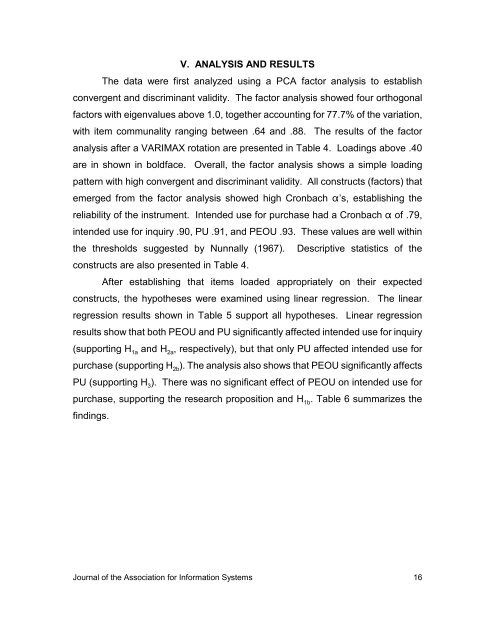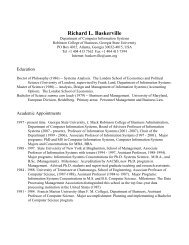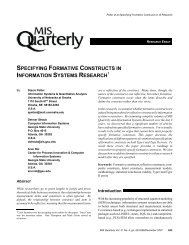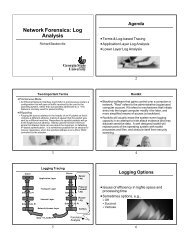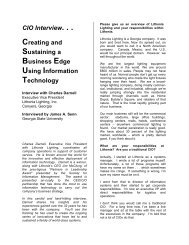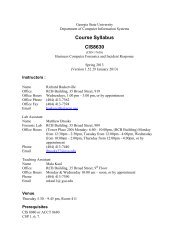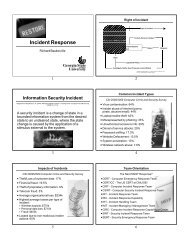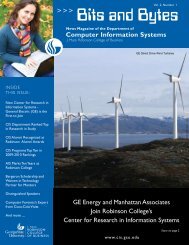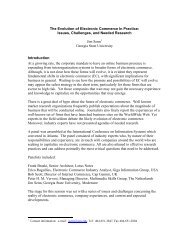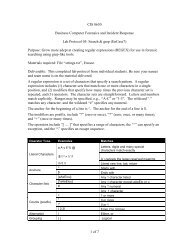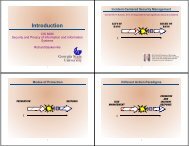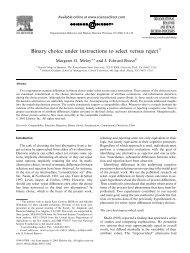The Relative Importance of Perceived Ease of Use in IS Adoption: A ...
The Relative Importance of Perceived Ease of Use in IS Adoption: A ...
The Relative Importance of Perceived Ease of Use in IS Adoption: A ...
Create successful ePaper yourself
Turn your PDF publications into a flip-book with our unique Google optimized e-Paper software.
V. ANALYS<strong>IS</strong> AND RESULTS<strong>The</strong> data were first analyzed us<strong>in</strong>g a PCA factor analysis to establishconvergent and discrim<strong>in</strong>ant validity. <strong>The</strong> factor analysis showed four orthogonalfactors with eigenvalues above 1.0, together account<strong>in</strong>g for 77.7% <strong>of</strong> the variation,with item communality rang<strong>in</strong>g between .64 and .88. <strong>The</strong> results <strong>of</strong> the factoranalysis after a VARIMAX rotation are presented <strong>in</strong> Table 4. Load<strong>in</strong>gs above .40are <strong>in</strong> shown <strong>in</strong> boldface. Overall, the factor analysis shows a simple load<strong>in</strong>gpattern with high convergent and discrim<strong>in</strong>ant validity. All constructs (factors) thatemerged from the factor analysis showed high Cronbach ?’s, establish<strong>in</strong>g thereliability <strong>of</strong> the <strong>in</strong>strument. Intended use for purchase had a Cronbach ? <strong>of</strong> .79,<strong>in</strong>tended use for <strong>in</strong>quiry .90, PU .91, and PEOU .93. <strong>The</strong>se values are well with<strong>in</strong>the thresholds suggested by Nunnally (1967). Descriptive statistics <strong>of</strong> theconstructs are also presented <strong>in</strong> Table 4.After establish<strong>in</strong>g that items loaded appropriately on their expectedconstructs, the hypotheses were exam<strong>in</strong>ed us<strong>in</strong>g l<strong>in</strong>ear regression. <strong>The</strong> l<strong>in</strong>earregression results shown <strong>in</strong> Table 5 support all hypotheses. L<strong>in</strong>ear regressionresults show that both PEOU and PU significantly affected <strong>in</strong>tended use for <strong>in</strong>quiry(support<strong>in</strong>g H 1a and H 2a , respectively), but that only PU affected <strong>in</strong>tended use forpurchase (support<strong>in</strong>g H 2b ). <strong>The</strong> analysis also shows that PEOU significantly affectsPU (support<strong>in</strong>g H 3 ). <strong>The</strong>re was no significant effect <strong>of</strong> PEOU on <strong>in</strong>tended use forpurchase, support<strong>in</strong>g the research proposition and H 1b . Table 6 summarizes thef<strong>in</strong>d<strong>in</strong>gs.Journal <strong>of</strong> the Association for Information Systems 16


